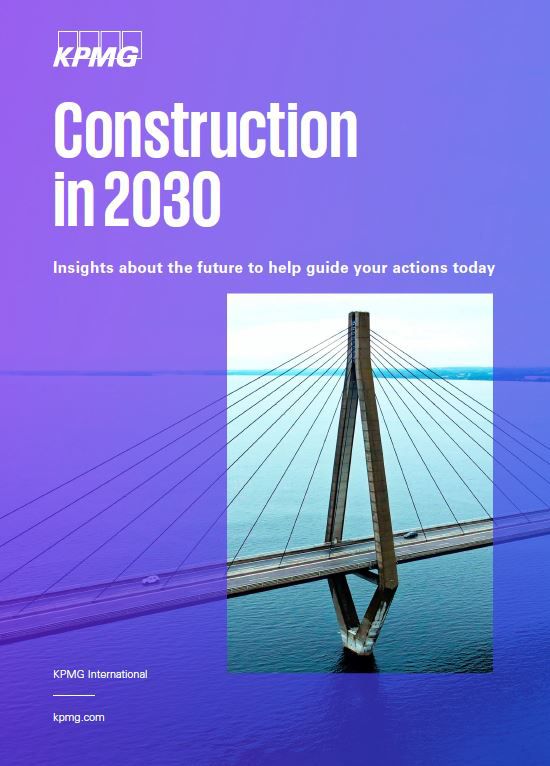What could the world of construction look like in 2030?
The past few years have been dramatic for the engineering and construction (E&C) sector.
COVID-19, supply chain disruption, material shortages, raging inflation, geopolitical conflict and major talent gaps. These phenomena top off longstanding challenges of variable performance records, poor productivity, an inability to attract graduates, boom-and-bust economic cycles, low contractor margins and continued lack of cost certainty for owners.
The sector is also under significant pressure to master data and analytics and deliver sustainable construction, buildings and infrastructure.
At this pivotal point, the October 2022 Engineering & Construction Risk Institute Risk Management Conference held in Athens, Greece, presented a timely opportunity to discuss a way forward for the industry. Some of the world’s leading engineering and construction minds addressed pressing issues facing the sector, and were asked to envisage a bright future.
KPMG's Construction in 2030 report is an exercise in future gazing. It looks at the world of construction from the year 2030, reflecting on the current landscape and progress made, to help businesses take the steps needed to bring the sector to new heights.
Construction in 2030: Future trends
Predictions for 2030
A step change in project performance
Productivity has improved dramatically, with a much higher record of on-time, on-budget, high-quality projects. Decision-making has been greatly enhanced through the Internet of Things, artificial intelligence, machine learning, automation and analytics, with sensors able to detect problems that would previously have been unseen.
And the growing application of data and analytics (D&A) has unlocked the potential of predictive forecasting and maintenance, enabling project managers to keep clients well-informed of progress, tackle potential problems before they arise and minimise equipment shutdowns.
Pushing the innovation envelope
In a few short years, E&C has embraced innovation with open arms. Companies have adopted startup mentalities through innovation labs or hubs separate from the main business. Many have acquired startups from within and beyond the sector and worked in partnership with other leading-edge players in the construction ecosystem. And the sector has gained mastery over data, with E&C companies frequently considered to be “data companies that build things.
Modularisation and standardisation have gone mainstream, with a major emphasis on better, often automated design for manufacture and assembly, with far less work performed on site and routine use of 3D printing. Also significantly reduced are the carbon footprint and levels of waste and pollution, with material choices based upon sustainability and circularity. Safety is a big winner, with dangerous jobs carried out by robots and remote operating equipment.
Risk management from a higher altitude
In 2030, risk management has reached the same levels of maturity that health and safety achieved by 2023. The ability to aggregate risk at an enterprise level has afforded contractors and owners a clearer view of portfolio risk. This helps avoid bids that could push the business beyond its accepted risk limit, and promotes early risk identification and decisive action to prevent project failure.
Increasing use of D&A has led to a better understanding of risk interdependence, both within and across projects. For example, E&C companies can now gain a more accurate view of the impact of disruption to supply chains, worker availability or material cost inflation, on both projects and the wider portfolio.
Reliable and resilient supply chains
In 2030, suppliers have become collaborators in strategic innovation and risk and profit is shared across the supply chain. Supply chains are far more transparent, making it easier to spot problems and carry out environmental, social and governance (ESG) reporting.
The sector has experienced a growth in innovative, localised sourcing, which cuts transportation costs, lowers carbon footprint and hedges against the risk of disruption from geopolitical events, resource shortages and climate change.
A sector in demand
Construction has become an industry of choice for graduates and school leavers, offering exciting careers involving technology, design and engineering, working on the cutting edge of innovation. Many of the jobs traditionally carried out on site have moved to factories and design offices, while flexible, remote working has become more common, with an emphasis on work-life balance.
The diversity barrier has been overcome, with a huge influx of women and talent from around the world joining the sector. This brings about exciting new approaches to problem-solving and transforms the sector's image from “hard-hat, manual labor” to “slick creators of technologically advanced, beautiful and sustainable buildings and infrastructure”.
ESG adoption drives investment
The construction value chain has become sustainable, with circular design, sensitivity to biodiversity, and strong support of local communities. Consultations with those impacted by projects begin at an early stage and continue throughout the project lifecycle and beyond.
Buildings and infrastructure are also far more resilient to the effects of climate change, such as rising sea levels, floods, droughts, heatwaves, wildfires and other extreme weather events. E&C companies and consultants. E&C businesses are now predominantly value-based, with an ethical stance on the types of projects they take on, and high standards of ESG reporting. All of which makes the sector appealing to investors, with low-cost capital flowing into projects.
How we can help
KPMG in Singapore’s advisory practice consists of professionals from diverse formal backgrounds. By combining valuable global insight with hands-on local experience, they can help you address challenges at various stages of the life cycle of infrastructure assets or programs — from planning, strategy and construction through to operations and handback.
Get in touch
Connect with us
- Find office locations kpmg.findOfficeLocations
- kpmg.emailUs
- Social media @ KPMG kpmg.socialMedia

